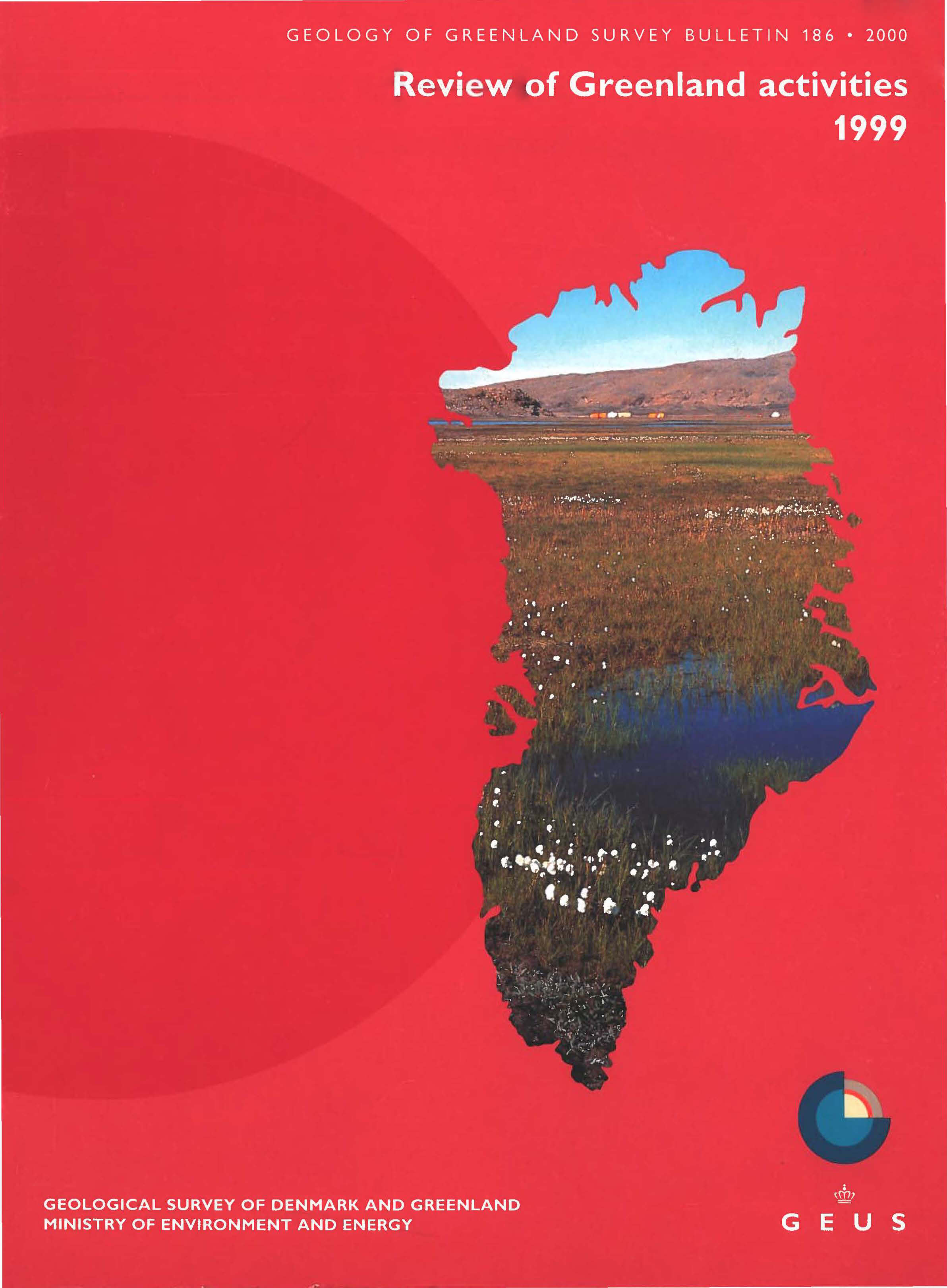Ketilidian structure and the rapakivi suite between Lindenow Fjord and Kap Farvel, South-East Greenland
DOI:
https://doi.org/10.34194/ggub.v186.5215Abstract
The southern tip of Greenland is underlain by the Palaeoproterozoic Ketilidian orogen (e.g. Chadwick & Garde 1996; Garde et al. 1998a). Field investigations in the summer of 1999 were focused on the structure of migmatites (metatexites) and garnetiferous granites (diatexites) of the Pelite Zone in the coastal region of South-East Greenland between Lindenow Fjord and Kap Farvel (Figs 1, 2). Here, we first address the tectonic evolution in the Pelite Zone in that region and its correlation with that in the Psammite Zone further north. Then, the structure and intrusive relationships of the rapakivi suite in the Pelite Zone are discussed, including particular reference to the interpretation of the controversial outcrop on Qernertoq (Figs 2, 8). Studies of the structure of the north-eastern part of the Julianehåb batholith around Qulleq were continued briefly from 1998 but are not addressed here (Fig. 1; Garde et al. 1999). The field study was keyed to an interpretation of the Ketilidian orogen as a whole, including controls of rates of thermal and tectonic processes in convergent settings. Earlier Survey field work (project SUPRASYD, 1992–1996) had as its principal target an evaluation of the economic potential of the orogen (Nielsen et al. 1993). Ensuing plate-tectonic studies were mainly funded in 1997–1998 by Danish research foundations and in 1999 by the Natural Environment Research Council, UK. The five-week programme in 1999 was seriously disrupted by bad weather, common in this part of Greenland, and our objectives were only just achieved. Telestation Prins Christian Sund was the base for our operations (Fig. 2), which were flown with a small helicopter (Hughes MD-500).
Downloads
Published
Issue
Section
License
This article is distributed under a CC-BY 4.0 licence, permitting free redistribution and reproduction for any purpose, even commercial, provided proper citation of the original work. Author(s) retain copyright over the article contents.


